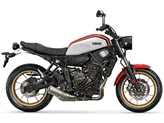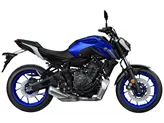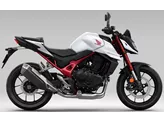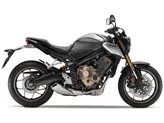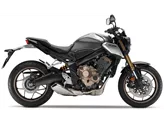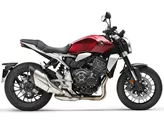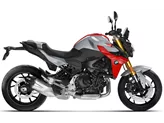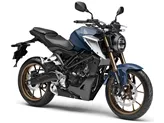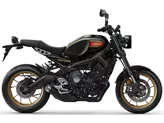Honda CB650R 2019 vs. Yamaha XSR700 2016

Honda CB650R 2019
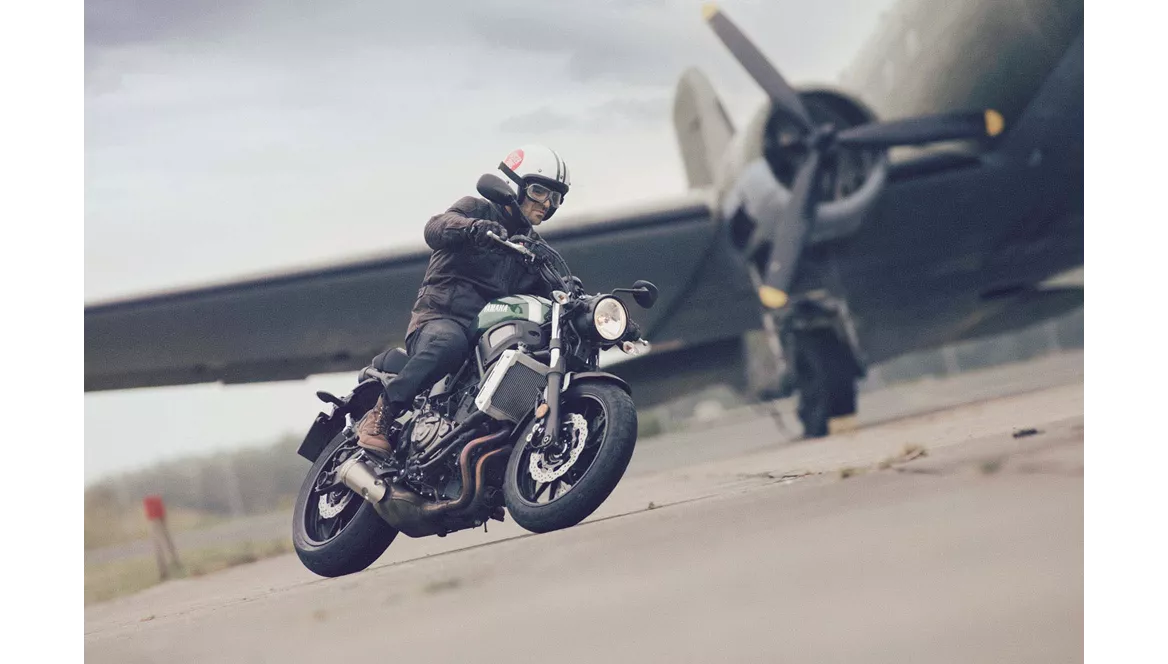
Yamaha XSR700 2016
Overview - Honda CB650R 2019 vs Yamaha XSR700 2016
In terms of engine specifications, the Honda CB650R 2019 is equipped with an inline four-cylinder engine that delivers 95 horsepower and 64 Nm of torque. On the other hand, the Yamaha XSR700 2016 features an inline twin-cylinder engine that produces 75 horsepower and 68 Nm of torque. While the Honda CB650R offers more power, the Yamaha XSR700 has a slightly higher torque output.
Both motorcycles are equipped with fuel injection systems and liquid cooling, ensuring efficient and reliable performance. The engine displacement of the Honda CB650R is 649cc, while the Yamaha XSR700 has a displacement of 689cc. The Honda CB650R has four cylinders, while the Yamaha XSR700 has two cylinders.
In terms of suspension, both motorcycles feature a swing arm rear suspension and a monoshock absorber. However, the Honda CB650R is equipped with an upside-down telescopic fork front suspension, providing better stability and control compared to the telescopic fork front suspension of the Yamaha XSR700.
Both motorcycles have steel frames, ensuring durability and stability. The Honda CB650R has double disc brakes with a diameter of 320mm and double piston calipers at the front, while the Yamaha XSR700 has double disc brakes with a diameter of 282mm and four-piston calipers at the front. Both motorcycles are equipped with ABS for advanced rider assistance.

Honda CB650R 2019
In terms of dimensions and weights, the Honda CB650R has a front tire width of 120mm and a rear tire width of 180mm, with both tires having a diameter of 17 inches. The wheelbase is 1450mm, and the seat height is 810mm. The kerb weight of the Honda CB650R, including ABS, is 208kg, and it has a fuel tank capacity of 15.4 liters.
On the other hand, the Yamaha XSR700 has the same front and rear tire width and diameter as the Honda CB650R. The wheelbase is slightly shorter at 1405mm, and the seat height is 815mm. The kerb weight of the Yamaha XSR700, including ABS, is 186kg, and it has a fuel tank capacity of 14 liters.
In terms of strengths, the Honda CB650R is praised for its rev-happy engine, reasonable power output, sporty seating position, wide handlebars, and overall rideability. It is considered comfortable for everyday use and features a visually appealing display.

Yamaha XSR700 2016
The Yamaha XSR700 is praised for its elastic motor, direct transmission, easy handling, and good build quality.
However, the Honda CB650R has some weaknesses, including a potential weakness in the chassis, which can be seen as a disadvantage. Additionally, it may not offer as much power from the hairpin as its two-cylinder competition.
The Yamaha XSR700 has a few weaknesses as well, including a chassis that may be too soft for some riders and a seating position that may require some getting used to.
In conclusion, the Honda CB650R 2019 offers more power and a sportier seating position compared to the Yamaha XSR700 2016. However, the Yamaha XSR700 is praised for its easy handling and good build quality. Ultimately, the choice between the two motorcycles will depend on the rider's preferences and priorities.
Technical Specifications Honda CB650R 2019 compared to Yamaha XSR700 2016
Pros and Cons in comparison
Pros and Cons in comparison
Honda CB650R 2019
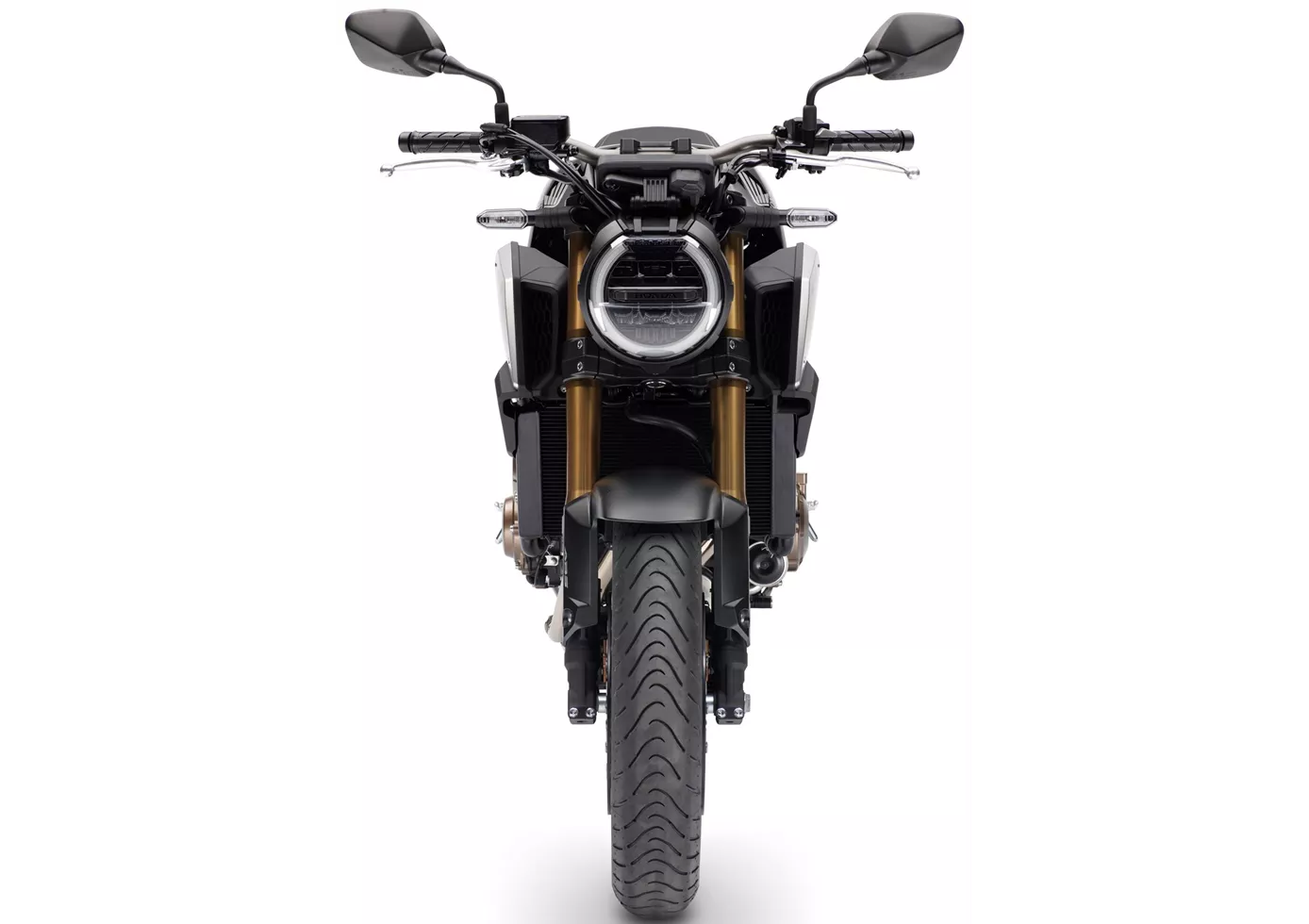
Honda's CB650R proves brilliantly that four-cylinder naked bikes with little displacement are also a real source of joy on the country road. The engine tuning gives enough pressure from the hairpin bend and rewards with a wonderful four-cylinder shriek after a short wait. The suspension components clearly attempt a balancing act between everyday life and sportiness, which is why unrest can quickly be found in the vehicle when approaching the cornering at a brisk pace. Somehow, however, this imperfection gives the Honda a lot of character and gives the rider the feeling of having to actively integrate himself into the action. For country road racers with a daily commute, a real recommendation!
Yamaha XSR700 2016

If you want an entry-level motorbike that will keep you happy for a long time, but at the same time has a cool retro look, there's really no getting around the Yamaha XSR 700. With the MT-07 as the technical basis, you're buying what is probably the most popular beginner's motorbike at the moment - just in a different guise. The XSR 700's greatest triumph is its unbelievably elastic in-line two-cylinder, which neither overtaxes beginners nor bores experienced motorcyclists. The throttle response is pleasantly direct and the power develops very harmoniously, there will never be an 'oops' moment here. However, the XSR 700 should be seen as a relaxed cruiser rather than a sporty motorbike. The chassis sways very easily when ridden fast and brings uncertainty into the vehicle. Experienced riders will find it easy to cope with, but a beginner may be overwhelmed.
Price Comparison Avarage Market Price Honda CB650R vs Yamaha XSR700
There are a few key differences between a Honda CB650R 2019 and a Yamaha XSR700 2016. In terms of price, the actual average price of a Yamaha XSR700 2016 is about 5% higher. A Honda CB650R 2019 experiences a loss of 420 GBP in one year of ownership. This is offset by a loss of 100 GBP for a Yamaha XSR700 2016. Compared to Yamaha XSR700 2016 there are less Honda CB650R 2019 bikes available on the 1000PS.de Marketplace, specifically 7 compared to 9. It takes less time to sell a Honda CB650R with 61 days compared to 85 days for a Yamaha XSR700. Since model year 2019 1000PS.de editors have written 23 reviews for the Honda CB650R and 26 reviews for the Yamaha XSR700 since model year 2015. The first review for the Honda CB650R was published on 08/10/2018 and now has more than 53,700 views. This compares to more than 13,700 views for the first review on Yamaha XSR700 published on 22/07/2015.


